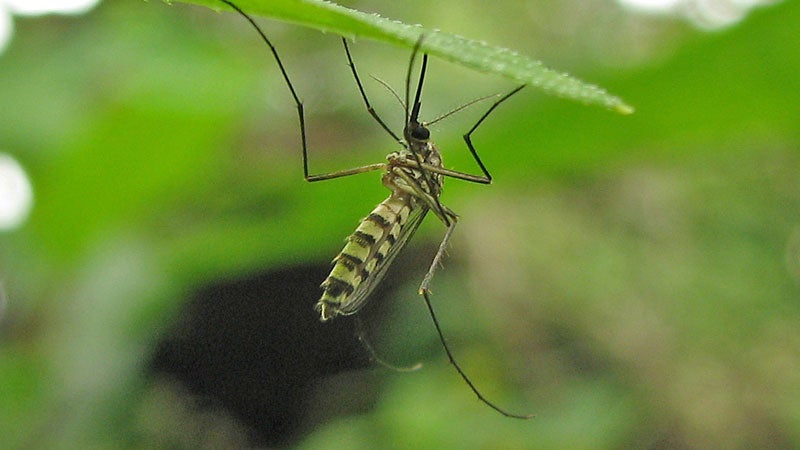For years, scientists and climatologists have expected to see climate change impact malaria's deadly reach, since the parasites that cause it (Plasmodium), and the mosquitoes (Anopheles) that spread it, grow and survive best in warm climates. Now a new study out of the University of Michigan confirms that the disease, and the bugs that bear it, are expanding into higher altitudes and previously unexposed communities.
The study, published , analyzed malaria records from highland regions of Ethiopia and Colombia, and then normalized them for influences such as malaria control programs or unusually high rainfall (control programs are reducing malaria rates, overall, and high rainfall boosts cases).
“We saw an upward expansion of malaria cases to higher altitudes in warmer years, which is a clear signal of a response by highland malaria to changes in climate,” , theoretical ecologist Mercedes Pascual.
The researchers examined malaria case records from the Antioquia region of western Colombia from 1990 to 2005, and from the Debre Zeit area of central Ethiopia from 1993 to 2005.
The report is especially troubling because the tropical highlands of Africa and South America contain very dense populations. The Debre Zeit region sits between roughly 5,000 and 8,000 feet above sea level and is home to 37 million people, or nearly half of Ethiopia's population. Many of these people live in rural areas where the insects could thrive.
“Because these populations lack protective immunity, they will be particularly vulnerable to severe morbidity and mortality,” said co-author Menno Bouma, honorary senior clinical lecturer at the London School of Hygiene & Tropical Medicine, which contributed to the study.
In an earlier study, the same researchers estimated that without new control programs, just one degree (Celsius) increase in temperature could lead to an additional 3 million malaria cases annually in Ethiopian children.
“Historically, the highlands regions of those countries were considered havens from malaria, places where people could go to get away from the disease,” says University of Michigan spokesman Jim Erickson.
For travelers, this trend should not immediately impact malaria rates for those who follow the Centers for Disease Control recommendations to take antimalarial drugs when visiting areas up to and up to (the Antioquia region sits just under 5,000 ft).
Still, it's important to consider that warming temperatures are already changing the footprint of at least one serious (yet preventable) disease. Plus, while the CDC rates the malaria in Ethiopia as “moderate,” it notes that the Plasmodium parasite there is resistant to the common anti-malarial drug chloroquine.


